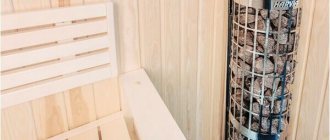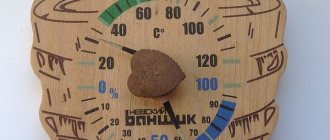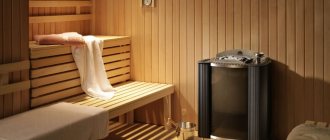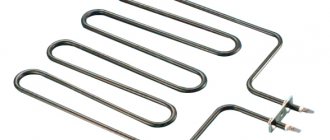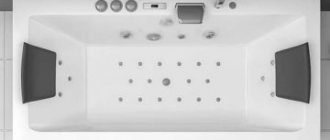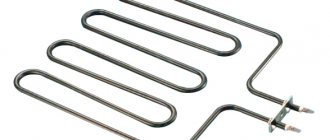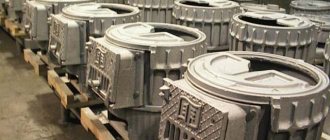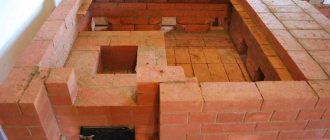What types of sauna are there: Finnish, Russian, Turkish
The most common bath regimes in Russia today are the Russian and Finnish bath . The Turkish one lags significantly behind in this regard, since it bears little resemblance to what most associate a bathhouse with.
As for the first, both, roughly speaking, are nearby on the same temperature-humidity diagram . In order not to complicate understanding, we will explain everything “on the fingers”.
A person in a steam room is simultaneously affected by heat and steam . , the proportion of both is important . That’s why choosing a stove for a steam room is so important.
Bath thermometer-hygrometer, measures air temperature and humidity
The bathhouse turned out to be akin to art precisely because the main role here is played by the skill of the steamer, a suitable stove and the ability to handle it. Because the heat can be different (soft and hard), and the steam can be different (heavy and light).
The conditions of a Russian bath are easy to remember - the temperature is about 55 degrees and the humidity is about 55 percent .
A Finnish bath (also known as a sauna) is a temperature of 90 degrees and above , but at the same time the humidity is 5-15 percent .
A Turkish bath (aka hammam) is a temperature of up to 40 degrees and almost 100% humidity .
As for steam, for a Russian bath you need light steam , which is formed when water is heated to a temperature above 100 degrees (this is only possible when the stones are strongly heated - up to 400 and above). In a hammam and even in a sauna, the steam can be ordinary, heavy - the same as you see in the kitchen when the kettle boils. This is acceptable, because there is too much of it in the hammam , and too little in the sauna , and the temperatures are such that it does no harm.
Accordingly, the stove you choose should be able to maintain the desired temperature and produce the right amount of steam of a certain quality. We analyze in detail the choice of electric ovens in another article. And here our task is to find the right use for the Harvia electric heater.
Harvia electric heaters: in which sauna is it better to install them?
The ability of an electric stove to produce steam is very limited , but the reasons for this will be discussed below. At the same time, it has excellent capabilities for quickly heating the steam room to a given temperature and maintaining it using automatic means.
How the electric heater "Harvia" works
The design of any stove determines its capabilities. Let’s briefly look at the design of the Harvia electric sauna stove, taking into account that many electric heaters are designed in a similar way.
So, an electric stove is a hollow body with heating elements installed inside .
In turn, a heating element is a hollow tube with a spiral inside . Under the influence of current, the spiral heats up, the tube serves to protect it. ( Tubular electric heaters are the most common.)
This is what the heating element for the Harvia electric heater looks like
Heating elements are very fragile and do not withstand pressure, bending and contact with water. Therefore they often fail.
If one of your heating elements has burned out, you can replace it yourself or with the help of a specialist. The main thing is to write off the markings, including the code and power , so that the store can select the right replacement model for you. Or you can take the burnt-out heating element with you.
Stones
The Harvia electric heater does not work without stones. More precisely, it doesn't work for long . Heating elements must transfer heat to stones, which have a high heat capacity and prevent the heating elements themselves from overheating.
Stones for the Harvia electric heater on the manufacturer’s website
According to the manufacturer’s own experts, only crushed stones with an uneven surface are suitable for use in heaters. They do not recommend using boned ones, since they have less surface area. In addition, it is important to follow the rule of free laying, with gaps between the stones; this is only possible if there is uneven chipping.
For his part, he offers crushed stone measuring 5-10 cm, which is suitable for small and medium-sized heaters. Stones from 10 to 15 cm are suitable for either wood-burning or high-power electric heaters (for example, Symphony (not produced) and Forte: AFB4, AFB6 and AFB9).
As for breeds suitable for an electric stove, then anything that is generally suitable for a bath will do. We have written a lot about bath stones, take an interest. But Finns usually sell branded soapstone for their stoves. Here it’s up to you to decide whether to take it or another stone. The main thing is to take a smaller fraction than for a regular wood-burning heater.
Useful video
Watch a Finnish video about how to place stones correctly (if you need more details, we have a whole article about laying stones in electric heaters):
Electric sauna stove Harvia: power supply
Since the “fuel” for the stove in our case is electricity, then we need to talk about the requirements for the electrical network . Because not every heater can be connected to a regular 220 volt network . You need to think about this in advance.
Despite the fact that electric heaters are undemanding to the foundation, do not require chimneys and firewood and have other advantages, the voltage of the network and the quality of the wires can become a source of unnecessary headaches.
First, let's be clear: on sale you will find 220 and 380 volt stoves. The former are connected to a regular single-phase network, the latter require a three-phase one.
3 phase
Where can I get three phases? Well, everything here is simple and complicated at the same time. Each house , including urban high-rise buildings, receives three-phase power , which is then distributed among consumers in the form of single-phase with a voltage of 220 volts. In other words, in principle it is possible to extend three phases into an apartment or house , but this issue needs to be settled.
But at home you will need more powerful wiring - a wire with a larger cross-section, preferably made of copper.
Yes, such stoves vary greatly in power. The higher it is, the greater the electricity consumption and the higher the requirements for the electrical network. In the review of electric sauna stoves "Harvia", we indicated models with high voltage. Be curious.
Electric sauna stove 3 phase Harvia Globe GL 110 on a high stand. Harvia Photos
Advantages of the Harvia brand
- The Finnish brand Harvia is known in many countries around the world due to the reliability and high quality of its products.
- Variety of model lines and feature sets.
- Fire safety.
- Possibility of choosing a wall or floor option, built into the bottom shelf of the model.
- Compact sizes and modern design of models.
- Easy to install.
- Long service life.
- of the latest technologies and high-quality materials in the production of Harvia electric sauna stoves
- Hygiene - no debris or dust is generated in the room.
- Reliability in operation.
Accessories
The Finns, as already mentioned, are trying to sell not just stoves, but a complete set of everything a steamer needs - from a finished sauna to a fence for the stove.
We list the main accessories that are offered to the client:
The latter deserves a few words.
Harvia electric heater with steam generator
Heater models that come complete with a built-in steam generator are labeled with the word Combi, for example, Harvia Club Combi: K11GS, K13.5GS and K15GS .
In addition to the built-in ones, there are also separate steam generators , but they are supplied as equipment for steam cabins - completely insulated, in which humidity conditions of up to 100% are achievable, while the heating element is the steam generator itself. So the Finns created something like a hammam , because the temperature in the cabin does not rise above 45 degrees. Steam cabins are advertised as a means of muscle relaxation and fighting colds.
Thus, the only option to artificially reproduce the conditions of a Russian bath is to buy any of the electric heaters with a Harvia brand steam generator, set the temperature to 55 degrees and try to get light steam from the steam generator using electricity.
Harvia Club Combi electric heater with steam generator. Harvia Photos
Take a look at our review of Harvia products - Combis are also present there.
The effect of heater heating on the sauna room
Light-colored floor materials become contaminated with ash, stone and metal particles falling from the heater stove.
Use dark flooring materials and dark cement for joints. It is normal for wooden sauna surfaces to darken over time. Darkening may be accelerated
• sunlight
• heat of the heater stove
• protective agents on walls (have low thermal stability)
• small particles from the stones of the heater, lifted by the air flow
• smoke entering the sauna, for example, when adding firewood.
If you follow the manufacturer's installation recommendations, the heater (for example, the instructions for the Harvia stove ) will not heat flammable materials in the sauna room to a dangerous level.
Is it possible to pour water on the Harvia electric heater?
If the heater is larger in size, and the heating elements are securely covered with stones , then you can give in more. The main thing is not to overdo it. The steam will be heavy from an open heater, and the temperature in the steam room will most likely be more than 60 degrees. Take care of your heart!
Video
In parting, we suggest you watch a simple video in which the guys show the device of one of the models:
We hope that the article helped you figure out whether a Finnish electric furnace is suitable in your particular case. Customers who prefer to opt for domestically produced products should familiarize themselves with the range of electric heaters made in Russia.
Ventilation of the sauna room Natural ventilation (Fig. 5)
A. The inlet for fresh air should be located close to the floor near the heater stove ( Harvia stove ), and
B. The exhaust vent should be located as far as possible from the heater stove under the ceiling. Since the heater itself ensures efficient air circulation, the exhaust vent is primarily intended to remove moisture from the sauna after steaming.
Mechanical exhaust ventilation (Fig. 6)
A. The fresh air inlet should be located at a height of approx. 500 mm above the heater, and
B. The exhaust vent should be as close to the floor as possible, such as under a shelf.
3.3. Sauna hygiene
To prevent sweat from getting on the shelves, use special towels.
The shelves, walls and floor of the sauna should be thoroughly washed at least once every six months. Use a stiff brush and sauna cleaner.
What types of sauna are there: Finnish, Russian, Turkish
The most common bath regimes in Russia today are the Russian and Finnish bath . The Turkish one lags significantly behind in this regard, since it bears little resemblance to what most associate a bathhouse with.
As for the first, both, roughly speaking, are nearby on the same temperature-humidity diagram . In order not to complicate understanding, we will explain everything “on the fingers”.
A person in a steam room is simultaneously affected by heat and steam . , the proportion of both is important . That’s why choosing a stove for a steam room is so important.
On a note! In order not to harm your health, you need to adhere to the rule: the more steam, the less heat there should be, and vice versa, the more heat, the less steam you let in.
Bath thermometer-hygrometer, measures air temperature and humidity
The bathhouse turned out to be akin to art precisely because the main role here is played by the skill of the steamer, a suitable stove and the ability to handle it. Because the heat can be different (soft and hard), and the steam can be different (heavy and light).
The conditions of a Russian bath are easy to remember - the temperature is about 55 degrees and the humidity is about 55 percent .
A Finnish bath (also known as a sauna) is a temperature of 90 degrees and above , but at the same time the humidity is 5-15 percent .
A Turkish bath (aka hammam) is a temperature of up to 40 degrees and almost 100% humidity .
As for steam, for a Russian bath you need light steam , which is formed when water is heated to a temperature above 100 degrees (this is only possible when the stones are strongly heated - up to 400 and above). In a hammam and even in a sauna, the steam can be ordinary, heavy - the same as you see in the kitchen when the kettle boils. This is acceptable, because there is too much of it in the hammam , and too little in the sauna , and the temperatures are such that it does no harm.
Accordingly, the stove you choose should be able to maintain the desired temperature and produce the right amount of steam of a certain quality. We analyze in detail the choice of electric ovens in another article. And here our task is to find the right use for the Harvia electric heater.
Harvia electric heaters: in which sauna is it better to install them?
Harvia Delta D23 oven. Harvia Photos
The ability of an electric stove to produce steam is very limited , but the reasons for this will be discussed below. At the same time, it has excellent capabilities for quickly heating the steam room to a given temperature and maintaining it using automatic means.
IMPORTANT! In other words, an ordinary Harvia electric heater, without additional accessories, is suitable exclusively for a sauna . There is no point in using it for a hammam at all. And if you want to set up a Russian bathhouse with such a device, you will have to purchase a model with a steam generator.
Electrical wiring in the steam room and washing room
If you look at the requirements of clause 7.1.40 of Chapter 7.1 of the PUE, you can see that “In saunas, bathrooms, toilets, showers, as a rule, hidden electrical wiring should be used. Open cable routing is allowed.
In saunas, bathrooms, toilets, and showers, laying wires with metal sheaths, in metal pipes and metal sleeves is not allowed.”
As you can see, priority is given to the hidden gasket. But open is also allowed. The main thing is not to use pipes, metal hoses and metal-braided cables. Instead of laying in pipes and metal hoses, it is recommended to use cable ducts and plastic corrugations, which allow the temperature to rise to normal values. The passage of the cable through the wall is carried out with the installation of a sleeve, which is subsequently filled with a fireproof compound.
Protective coatings
Figure 9. The specified safety distances to combustible materials can be reduced by half using a single protective cover and four times using a double protective cover.
Single protective coating may be made from non-combustible slabs of
fiber cement (mineral board) with a minimum thickness of 7 mm or sheet metal with a thickness of at least 1 mm.
A double protective coating (2x) can be made from the two slabs indicated above. The fastening points must be located close enough to each other to ensure the reliability of the structure.
Leave a gap of at least 30 mm between the surface to be protected and the slab(s). The protective covering must protrude at least 600 mm above the top surface of the heater. The equivalent of a single protective coating is a stone wall with a thickness of at least 55 mm. The equivalent of a double protective coating is a stone wall with a thickness of at least 110 mm. The stone wall must be open on the sides and located at a distance of at least 30 mm from the protected surface.
Harvia Legend heater protection elements Protective base WL100. Safety guard for heater WL200
A protective fence must be installed on the heater. Equivalent to a separate protective cover. Rice. 9.
Chimney guard WL300. for the Harvia Legend stove. Installed around the chimney and filled with stones. Suitable for both straight and inclined chimneys. Rice. 9.
How the electric heater "Harvia" works
The design of any stove determines its capabilities. Let’s briefly look at the design of the Harvia electric sauna stove, taking into account that many electric heaters are designed in a similar way.
So, an electric stove is a hollow body with heating elements installed inside .
In turn, a heating element is a hollow tube with a spiral inside . Under the influence of current, the spiral heats up, the tube serves to protect it. ( Tubular electric heaters are the most common.)
This is what the heating element for the Harvia electric heater looks like
Heating elements are very fragile and do not withstand pressure, bending and contact with water. Therefore they often fail.
Carefully! The manufacturer does not consider cases where this occurs as a violation of operating rules to be a reason for warranty repair. For example, you accidentally tilted one of the elements and it broke.
If one of your heating elements has burned out, you can replace it yourself or with the help of a specialist. The main thing is to write off the markings, including the code and power , so that the store can select the right replacement model for you. Or you can take the burnt-out heating element with you.
Stones
The Harvia electric heater does not work without stones. More precisely, it doesn't work for long . Heating elements must transfer heat to stones, which have a high heat capacity and prevent the heating elements themselves from overheating.
Stones for the Harvia electric heater on the manufacturer’s website
According to the manufacturer’s own experts, only crushed stones with an uneven surface are suitable for use in heaters. They do not recommend using boned ones, since they have less surface area. In addition, it is important to follow the rule of free laying, with gaps between the stones; this is only possible if there is uneven chipping.
Attention! The manufacturer claims that there is no place for ceramic, talc and smooth stones in its heaters.
For his part, he offers crushed stone measuring 5-10 cm, which is suitable for small and medium-sized heaters. Stones from 10 to 15 cm are suitable for either wood-burning or high-power electric heaters (for example, Symphony (not produced) and Forte: AFB4, AFB6 and AFB9).
IMPORTANT! Turning on the Harvia electric sauna stove without stones between the heating elements is strictly prohibited.
As for breeds suitable for an electric stove, then anything that is generally suitable for a bath will do. We have written a lot about bath stones, take an interest. But Finns usually sell branded soapstone for their stoves. Here it’s up to you to decide whether to take it or another stone. The main thing is to take a smaller fraction than for a regular wood-burning heater.
Useful video
Watch a Finnish video about how to place stones correctly (if you need more details, we have a whole article about laying stones in electric heaters):
PREPARATION FOR INSTALLATION OF ELECTRIC FURNACE
the voltage of the electric furnace and the control panel corresponds to the mains voltage; the control panel corresponds to the power and model of the electric furnace;
The power of the electric furnace corresponds to the volume of the steam room. The volume should not be lower than the minimum volume for the selected oven (see Instructions);
The maximum current of the fuses and the cross-section of the power cable are sufficient for the power of the furnace. (see instructions);
the location of the electric furnace allows for fireproof clearances around the furnace in accordance with the installation diagram;
The oven control device (thermostat and bath timer) is located on the easily accessible side. If necessary, the control panel can be moved by a qualified electrician to the desired side of the stove in accordance with the Instructions.
Harvia Legend 240 Duo, 300 Duo
The heater is installed in the opening of a concrete or brick wall. The minimum opening width should be 405 mm, and the minimum height from the floor should be 485 mm. The maximum wall thickness should be 120 mm. Figure 13.
• Remove the decorative panel.
• Push the furnace tunnel through the opening far enough to allow the trim panel to be reinstalled.
• Push the heater back so that the decorative panel on the door side is pressed against the wall and door.
Electric sauna stove Harvia: power supply
Since the “fuel” for the stove in our case is electricity, then we need to talk about the requirements for the electrical network . Because not every heater can be connected to a regular 220 volt network . You need to think about this in advance.
Despite the fact that electric heaters are undemanding to the foundation, do not require chimneys and firewood and have other advantages, the voltage of the network and the quality of the wires can become a source of unnecessary headaches.
First, let's be clear: on sale you will find 220 and 380 volt stoves. The former are connected to a regular single-phase network, the latter require a three-phase one.
3 phase
Where can I get three phases? Well, everything here is simple and complicated at the same time. Each house , including urban high-rise buildings, receives three-phase power , which is then distributed among consumers in the form of single-phase with a voltage of 220 volts. In other words, in principle it is possible to extend three phases into an apartment or house , but this issue needs to be settled.
But at home you will need more powerful wiring - a wire with a larger cross-section, preferably made of copper.
By the way! Sometimes, if the power is not too high, a 380-volt Harvia electric sauna stove can be connected to a 220-volt network, and it will work!
Yes, such stoves vary greatly in power. The higher it is, the greater the electricity consumption and the higher the requirements for the electrical network. In the review of electric sauna stoves "Harvia", we indicated models with high voltage. Be curious.
Electric sauna stove 3 phase Harvia Globe GL 110 on a high stand. Harvia Photos
SELECTION OF ELECTRIC FURNACE POWER
The choice of power of an electric furnace for a bath is carried out in accordance with the volume of the room. As a rough guide for calculations, you can take the ratio of 1 kW electric furnace per 1 m3 of steam room up to 10 m3. For volumes above 10 m3, the following ratios are accepted: 0.75 kW per 1 m3. The indicated ratios are used for steam rooms with good thermal insulation. If the steam room has wall surfaces made of concrete, brick or stone, it is necessary to add about 1.4 m3 more to the calculated volume for each square meter of wall made of the specified materials.
Safe distances
A. Improper placement of stones can cause surrounding objects to reach dangerous temperatures, even if they are at a safe distance. The specified safety distances only apply if the stones have been laid in the manner described in section 2.4.
See Figure 8.
A. Ceiling. The minimum distance from the top of the heater to the ceiling is 1000 mm.
B. Brick walls. Leave 50mm between the walls and the heater so that air can circulate behind the heater and to the sides. If the heater is installed in a wall niche, leave a distance of 210 mm between it and the side walls and 250 mm behind it.
C. Walls and shelves are made of flammable materials. Minimum safe distance to flammable materials: 210 mm on both sides of the Harvia heater stove,
250 mm behind and 500 mm in front of it. For heat entering through the door, the safety distance is 400 mm, calculated at an angle of 45°. Space required for use and maintenance. At least one square meter of space in front of the heater is required for its use and maintenance.
Accessories
The Finns, as already mentioned, are trying to sell not just stoves, but a complete set of everything a steamer needs - from a finished sauna to a fence for the stove.
We list the main accessories that are offered to the client:
The latter deserves a few words.
Harvia electric heater with steam generator
Heater models that come complete with a built-in steam generator are labeled with the word Combi, for example, Harvia Club Combi: K11GS, K13.5GS and K15GS .
In addition to the built-in ones, there are also separate steam generators , but they are supplied as equipment for steam cabins - completely insulated, in which humidity conditions of up to 100% are achievable, while the heating element is the steam generator itself. So the Finns created something like a hammam , because the temperature in the cabin does not rise above 45 degrees. Steam cabins are advertised as a means of muscle relaxation and fighting colds.
Thus, the only option to artificially reproduce the conditions of a Russian bath is to buy any of the electric heaters with a Harvia brand steam generator, set the temperature to 55 degrees and try to get light steam from the steam generator using electricity.
Harvia Club Combi electric heater with steam generator. Harvia Photos
Take a look at our review of Harvia products - Combis are also present there.
Installation of lamps
One of the features of installing lamps in a bathhouse is the correct choice of their location.
Many people attach the lamps in the steam room to the ceiling, but this is wrong. They are allowed to be installed only in zones 2 and 3 (see zoning above). That is, lighting fixtures should be placed no closer than 30cm to the ceiling, where the hottest air collects. In the second zone, decorative lighting fixtures are often installed at a distance of up to 0.5 m from the floor. In zone 3, main lighting fixtures are installed. A good choice would be lamps with a ceramic base and a frosted glass shade with a degree of dust and moisture protection IP54.
In the rest room and vestibule there are no restrictions on the choice of lamps, and there you can install any that you like in the store.
Before installation
A.Before installing the Harvia heater, make sure that all safety distances are observed. There should be no electrical appliances, wires or flammable materials within the established safe distances around the heater. When installing the Harvia stove, it is necessary to take into account the safe distances of the chimney!
• If the safety distance requirements are not met, additional protective equipment should be installed (M.1.3., 4.1.4.).
• Additional information regarding fire safety requirements can be obtained from your local fire department.
Floor protection
See Figure 7.
A. Concrete floor without tiles. A heater stove (for example, we consider Harvia stoves) can be installed on a concrete floor without any special precautions, if the concrete thickness is at least 60 mm. Make sure there are no electrical wires or water pipes in the concrete under the heater.
B. Floor made of flammable materials. Protect the floor with a concrete slab at least 60mm thick. The stove should protrude 300 mm behind and on the sides of the heater (if the heater is not installed flush against the wall), and no less than 400 mm in front of it. The slab should be supported a short distance above the floor surface to ensure that the floor material is dry.
C. Tiled floor. Floor adhesives and plaster and waterproofing materials laid under tiles are unstable
to the heat emitted by the heater. To protect the floor, you can use the protective base WL100 (I.1.4.) or other similar protection against thermal radiation.
Is it possible to pour water on the Harvia electric heater?
If the heater is larger in size, and the heating elements are securely covered with stones , then you can give in more. The main thing is not to overdo it. The steam will be heavy from an open heater, and the temperature in the steam room will most likely be more than 60 degrees. Take care of your heart!
Video
In parting, we suggest you watch a simple video in which the guys show the device of one of the models:
We hope that the article helped you figure out whether a Finnish electric furnace is suitable in your particular case. Customers who prefer to opt for domestically produced products should familiarize themselves with the range of electric heaters made in Russia.
Connecting a heater stove to a Harvia steel chimney
The CE marked Harvia steel chimney can be used for the removal of combustion gases. The chimney flue pipes are made of stainless steel; the chimney has fireproof insulation. The chimney has a round cross section. The diameter of the chimney is 115 mm, and the diameter of the outer casing is 220 mm.
1. Move the plug from the top connection hole to the rear.
2. Bend the plug retaining springs outward through the top connection hole until the plug is firmly seated in the hole.
3. Attaching the steel chimney pipe to the upper connection hole in the heater. Make sure the chimney is securely in place. Check out the detailed instructions for installing a steel chimney!
If protective flashing is used around the heater, the chimney insulation should begin at or below the top edge of the flashing.
SL/Duo: The fireproof wall in which the heater is installed must be raised to the ceiling. The safe distance between flammable structures and the outer steel jacket of the chimney must be at least 100 mm.
Assembly technology
To assemble an electric sauna heater with your own hands, you need to follow these steps:
Today, for small home saunas, it is best to use not massive brick stoves, which take up a lot of space, but small and compact, but convenient electric ones. The cost of such structures can be quite high, but you can save money by installing an electric furnace for heating stones with your own hands. The technology for its production is accessible. This is a cage for stones, in which heating elements are used for heating.
